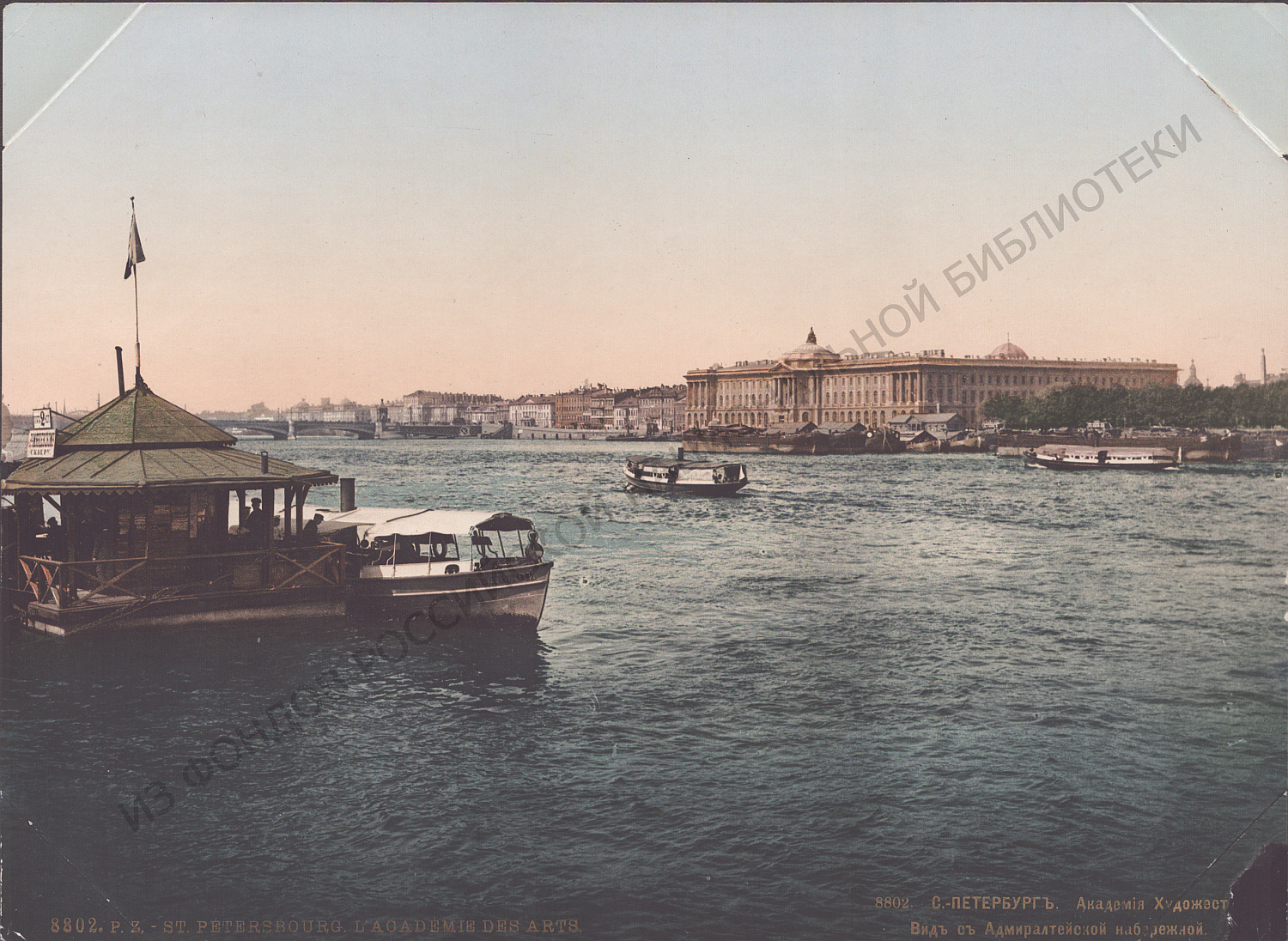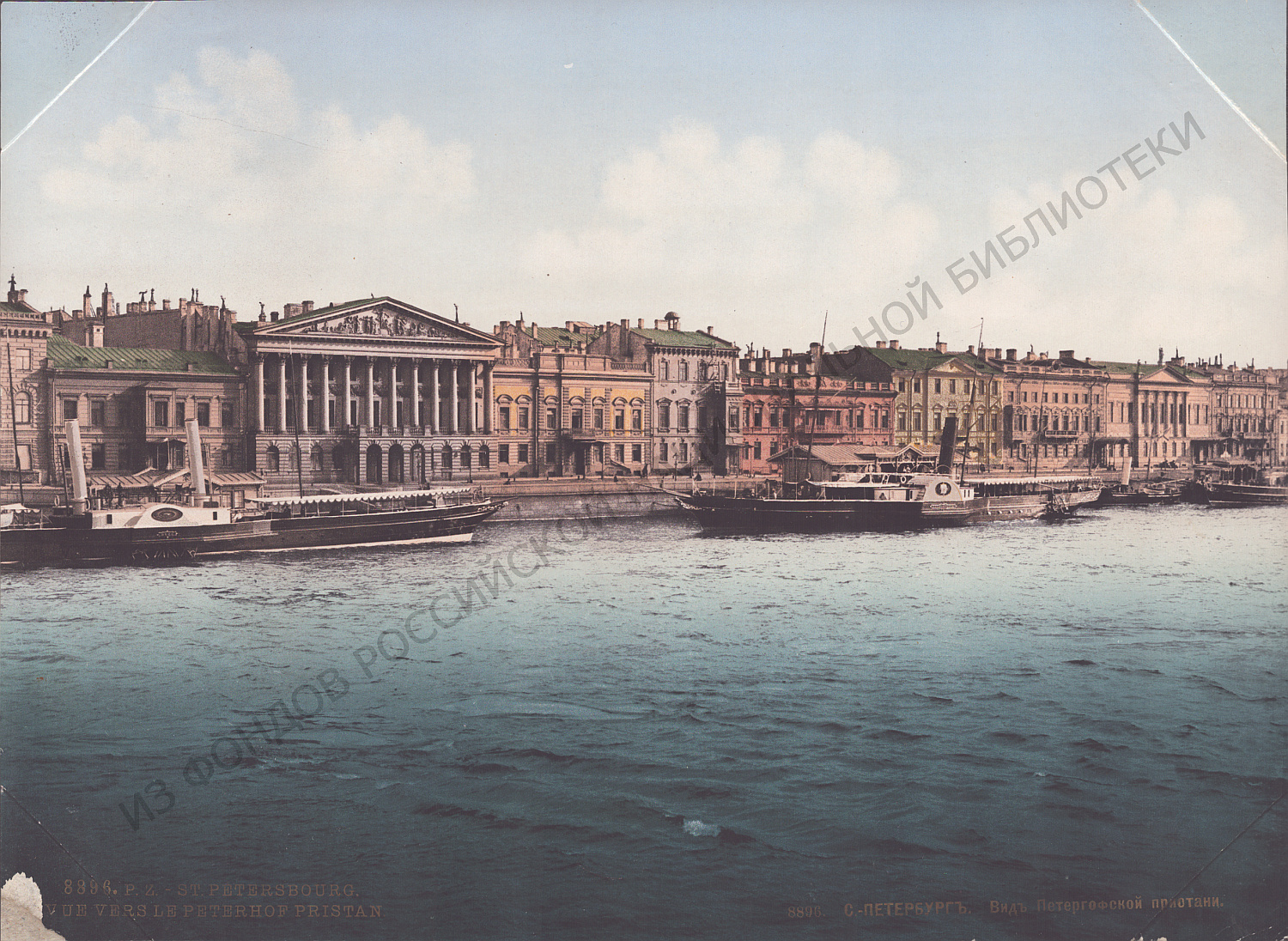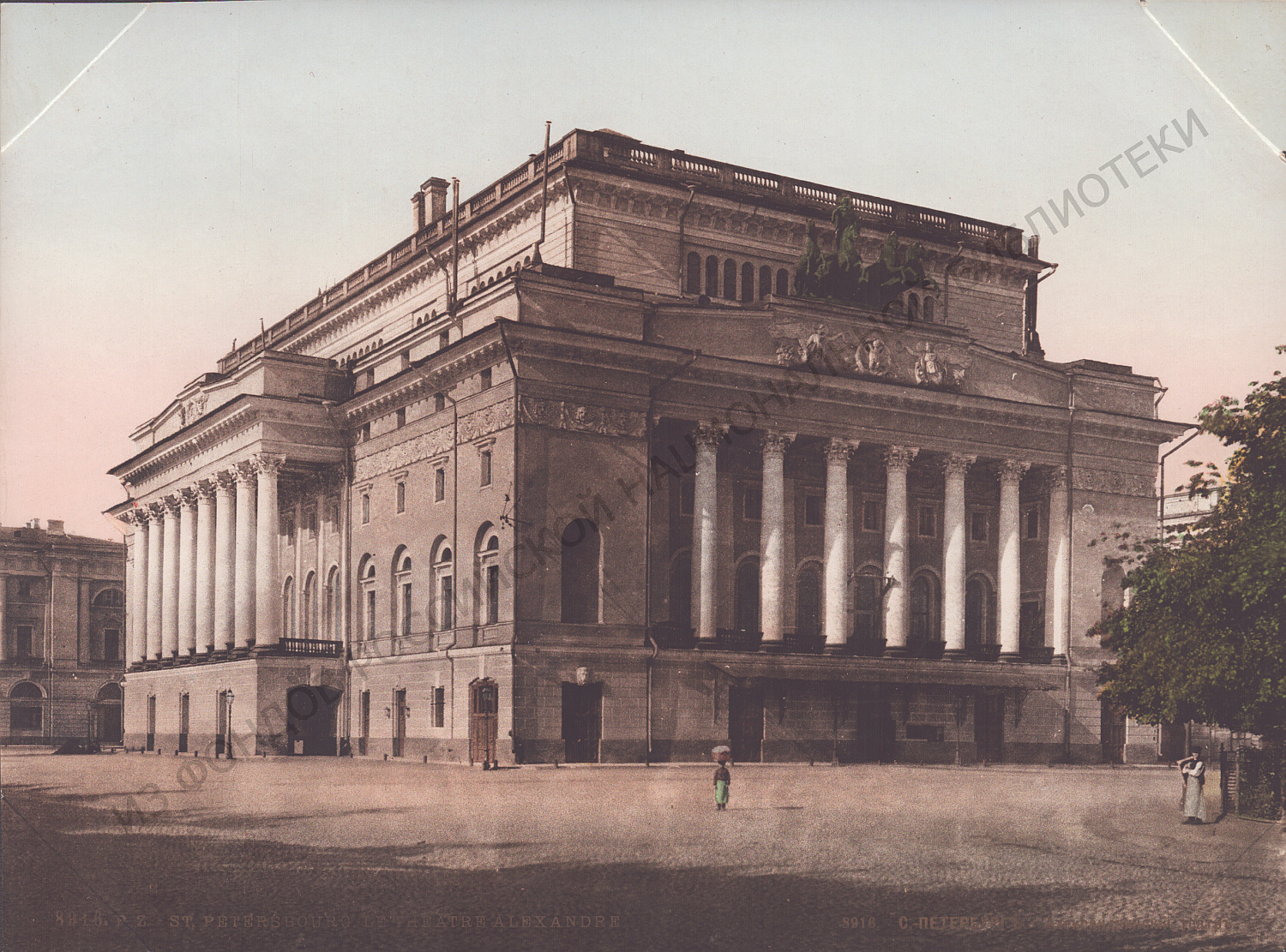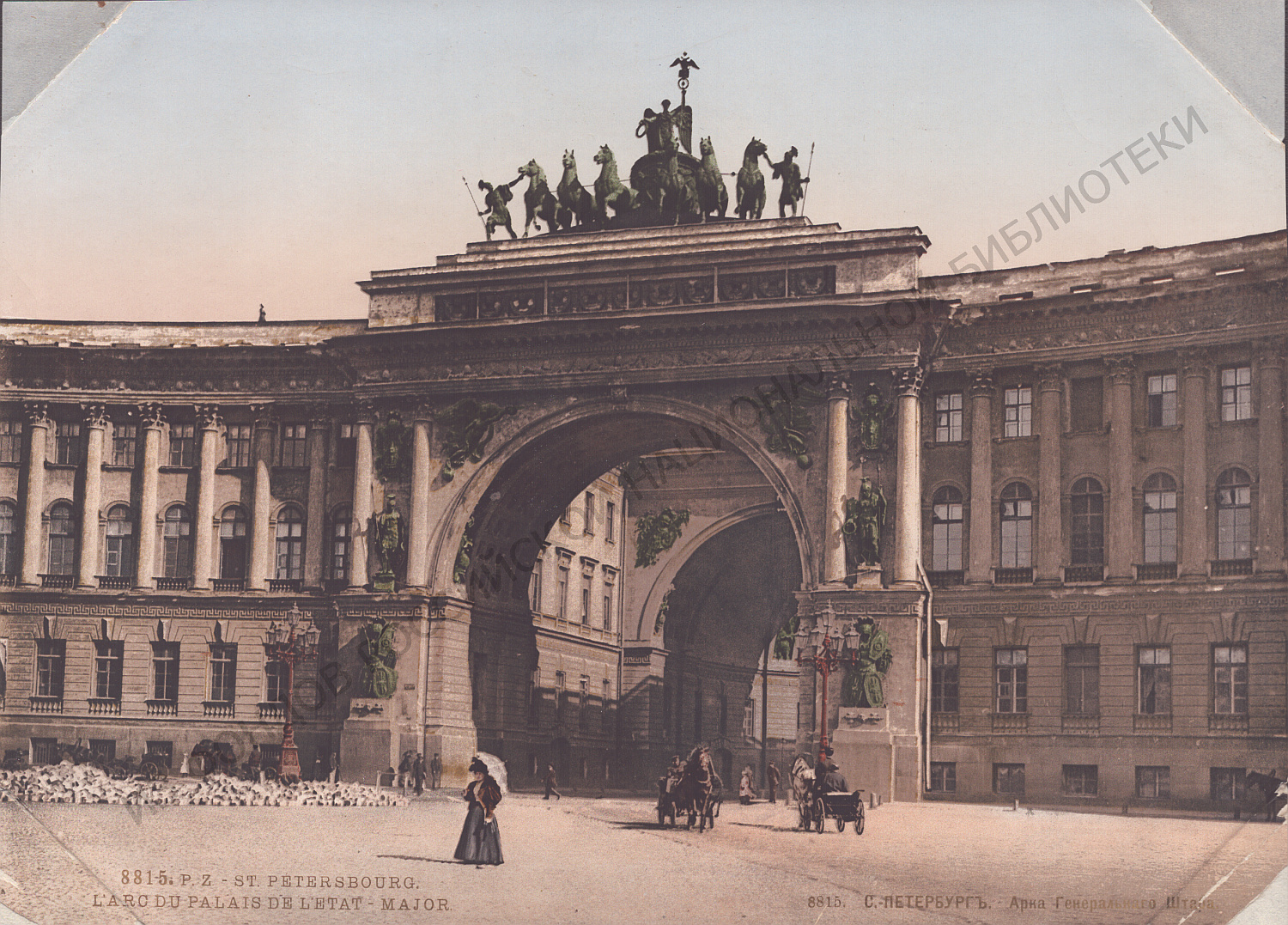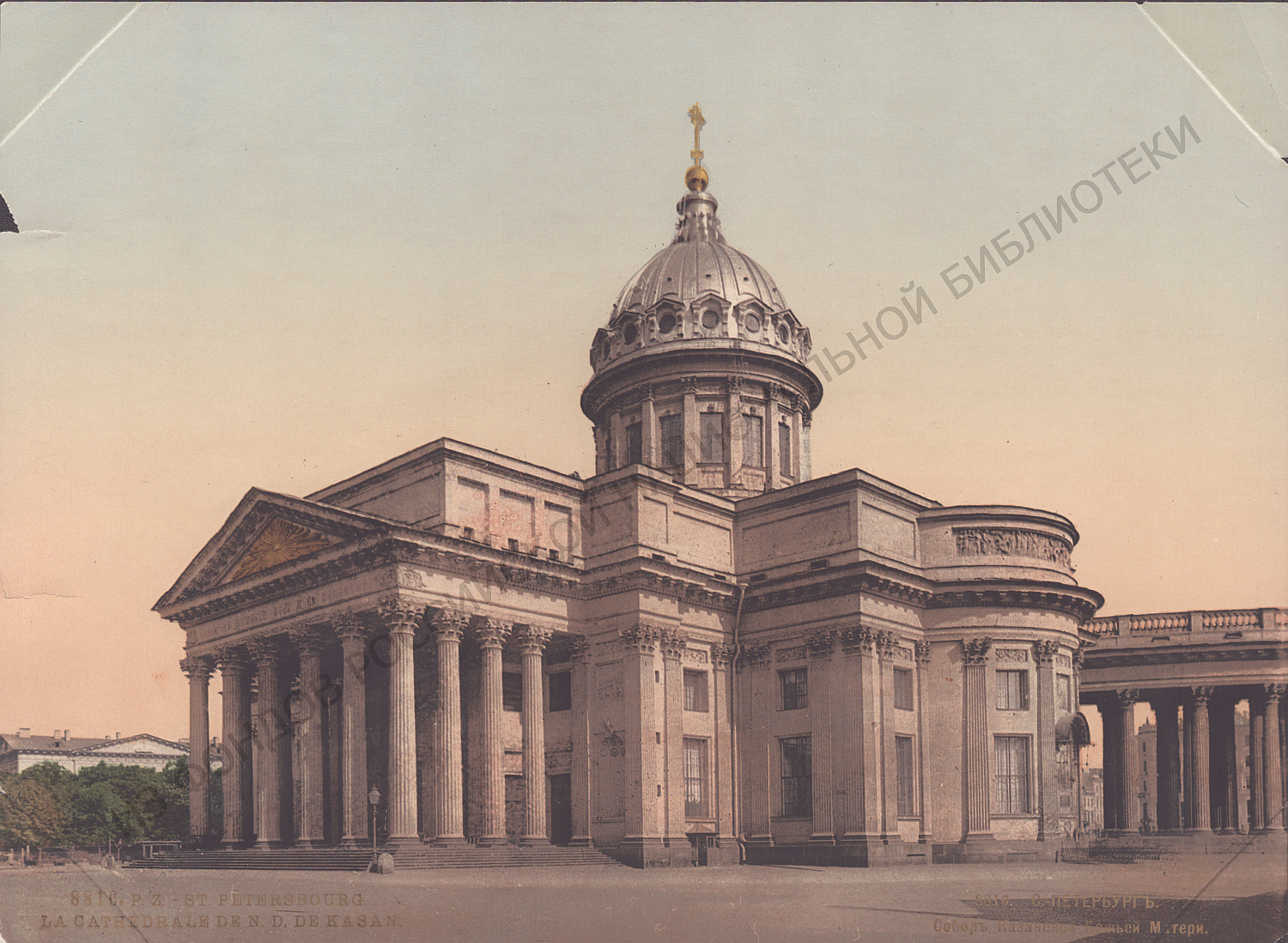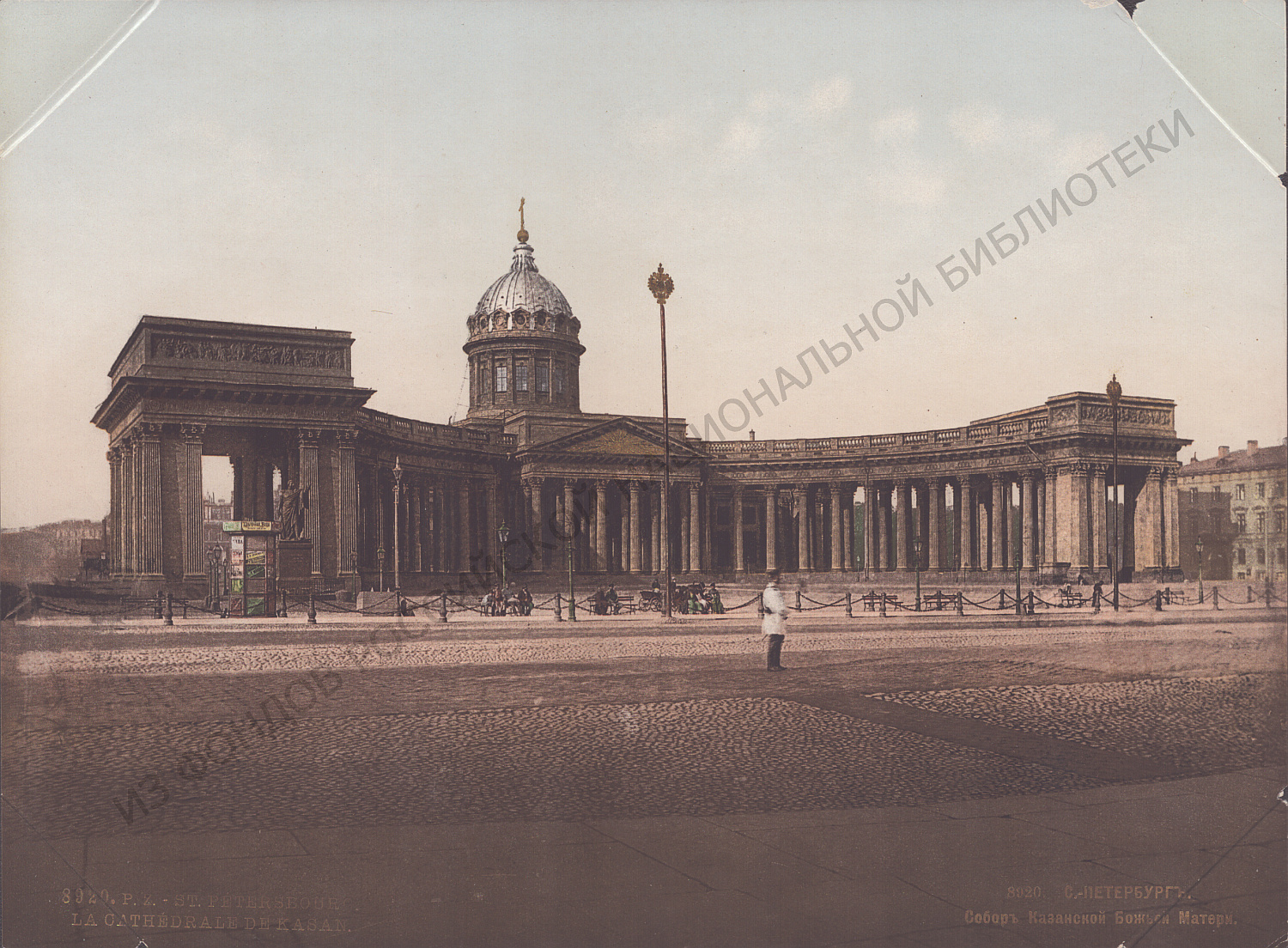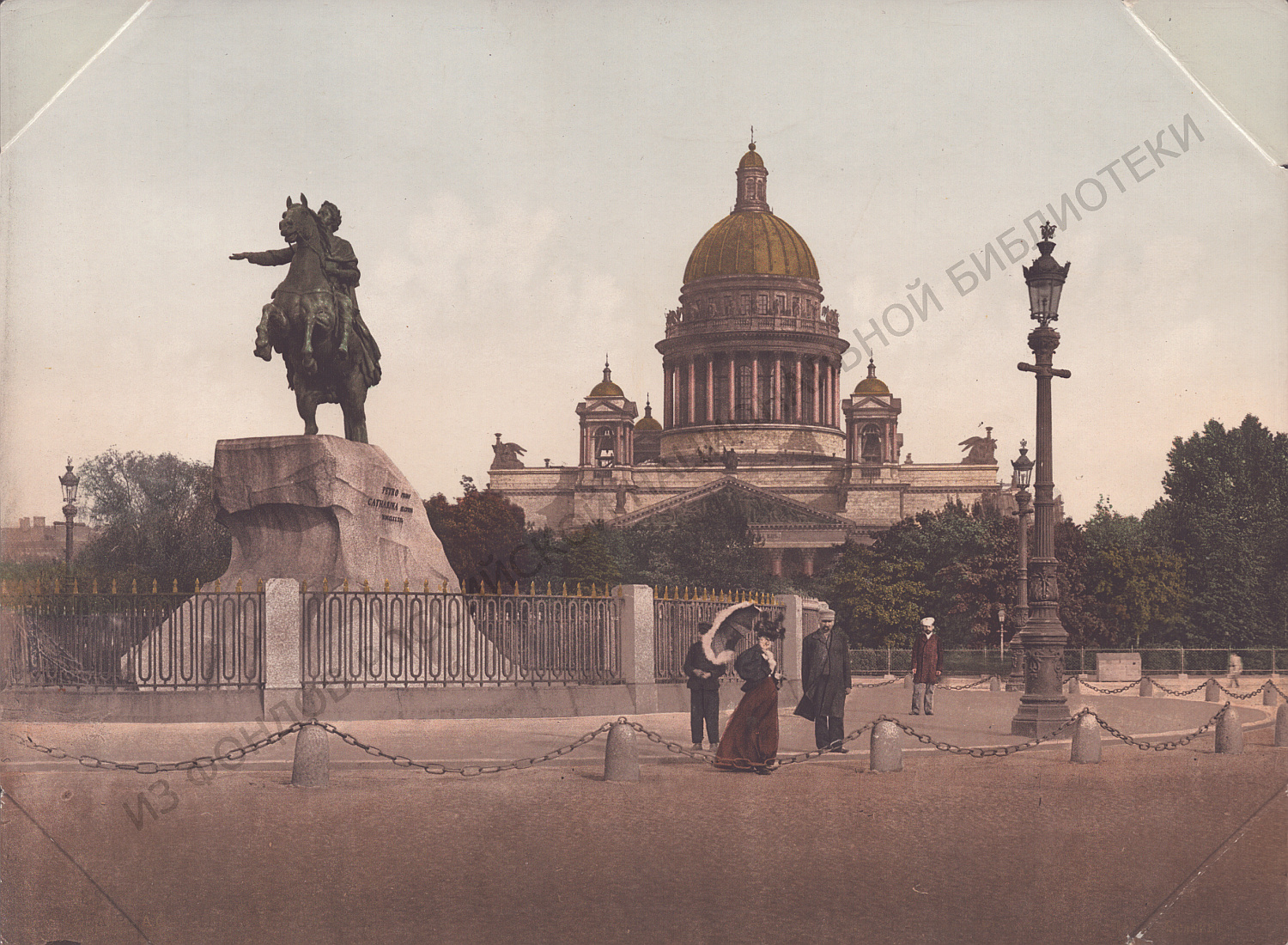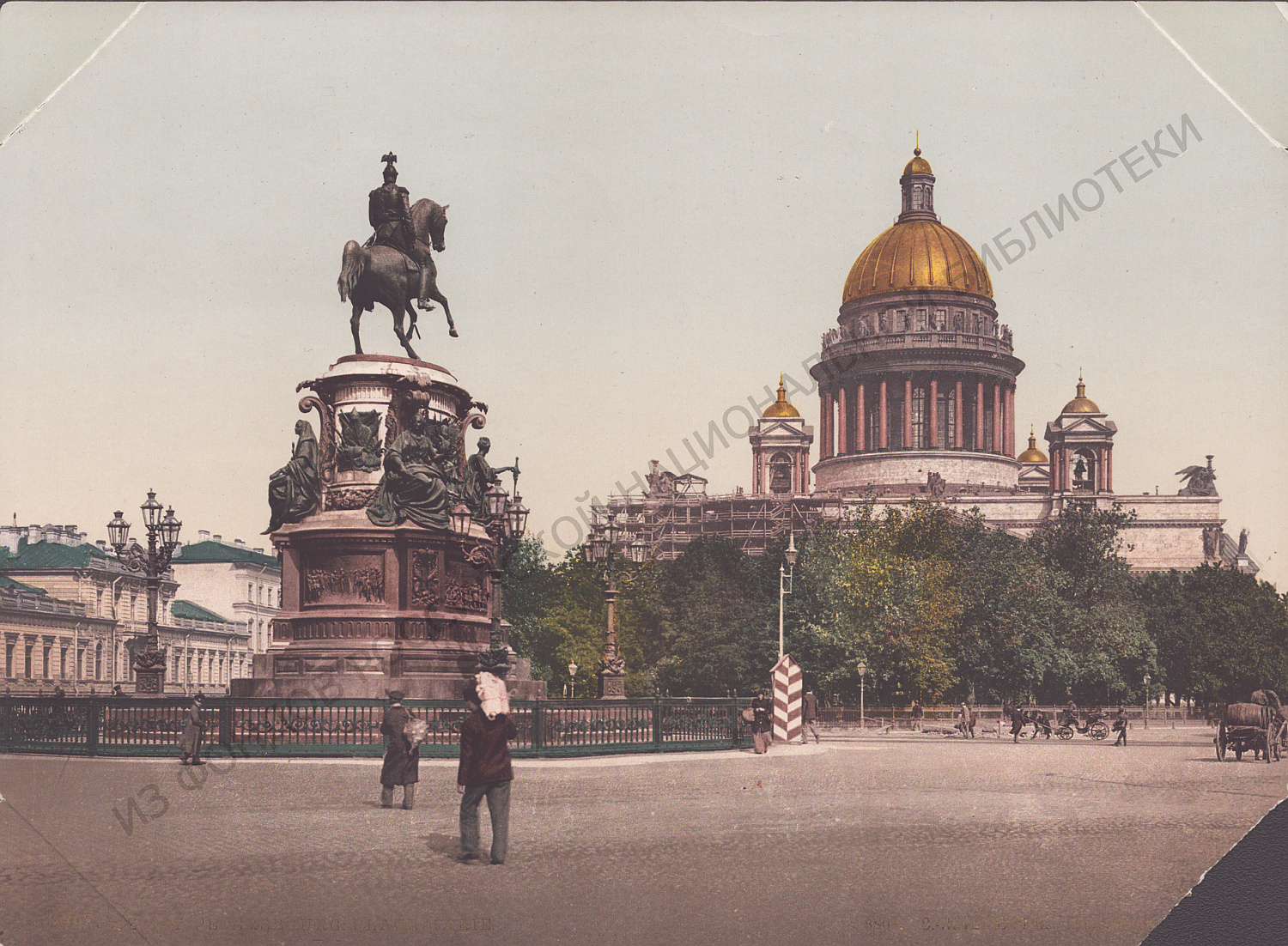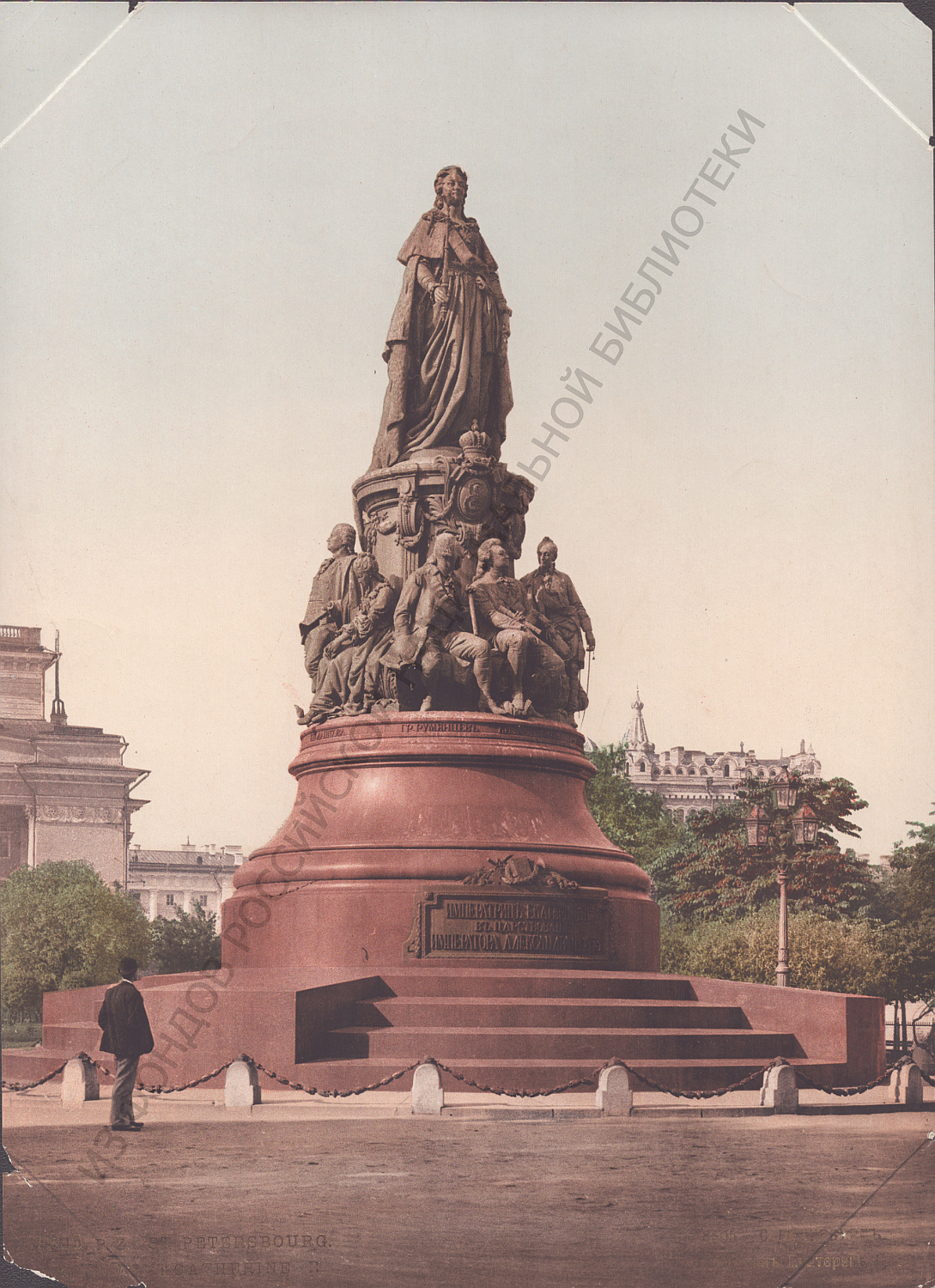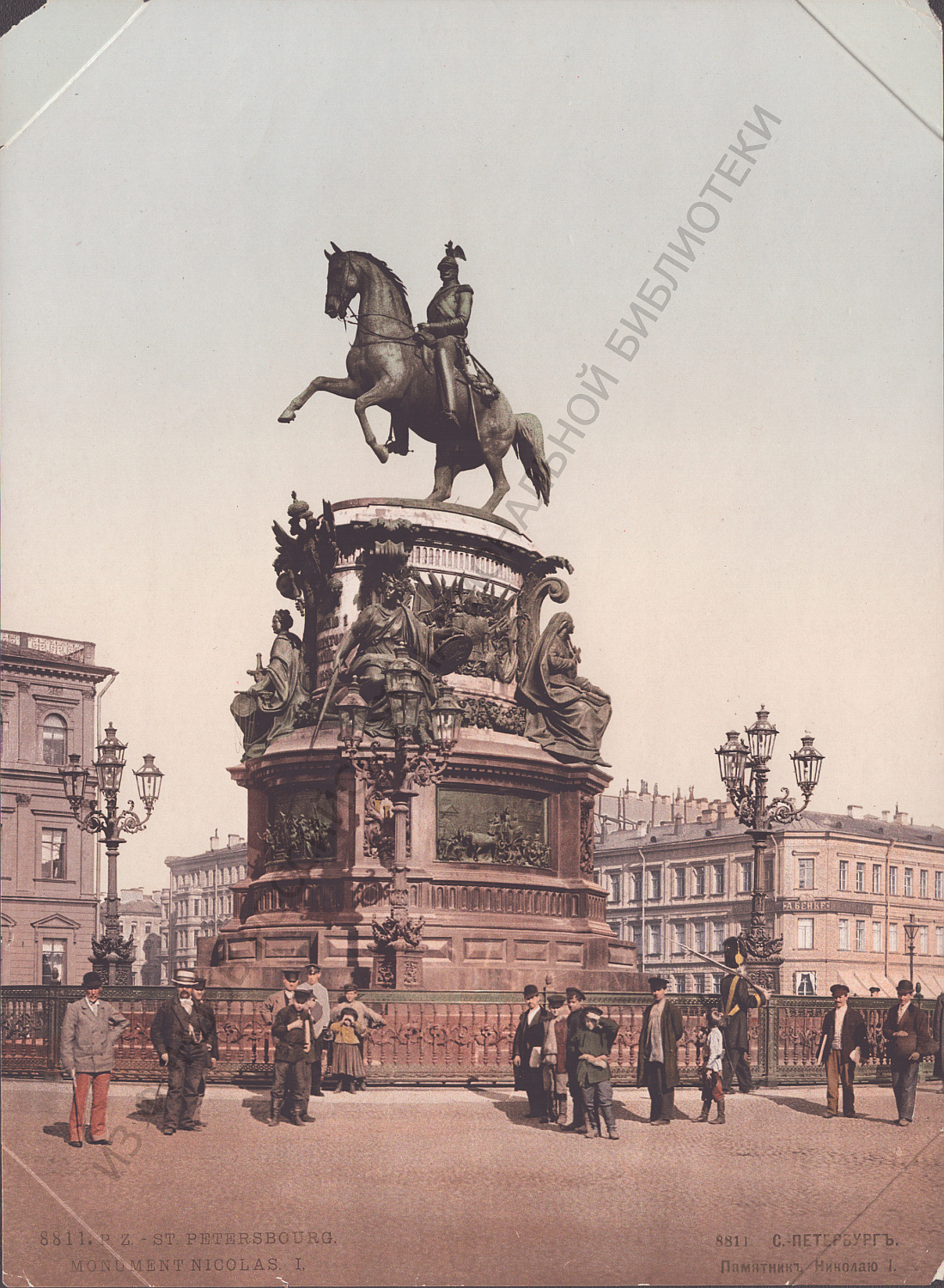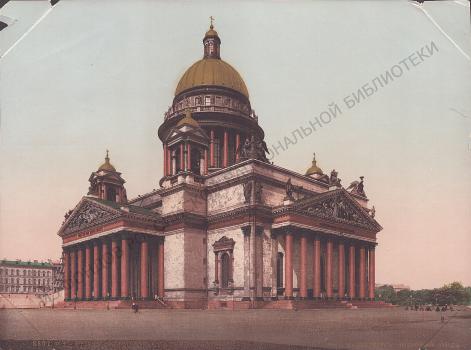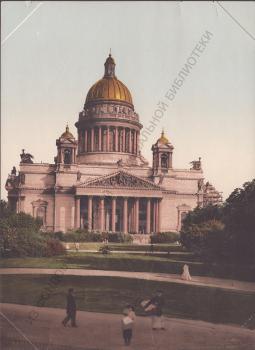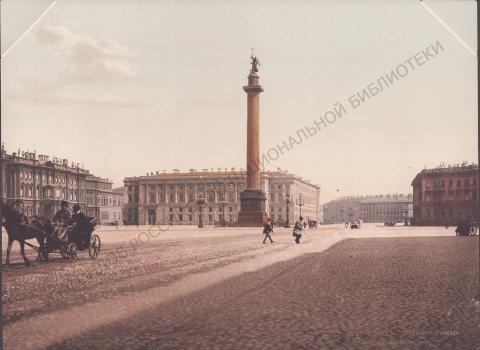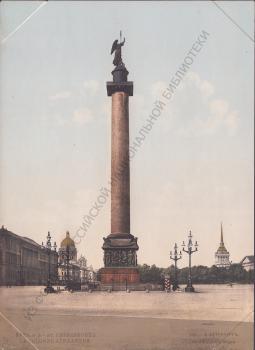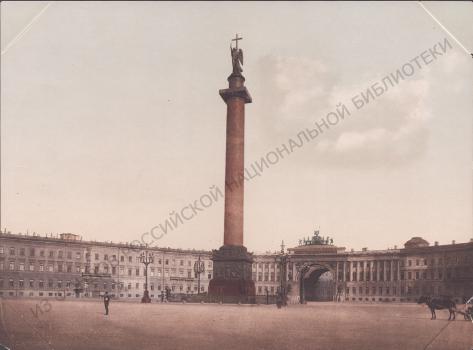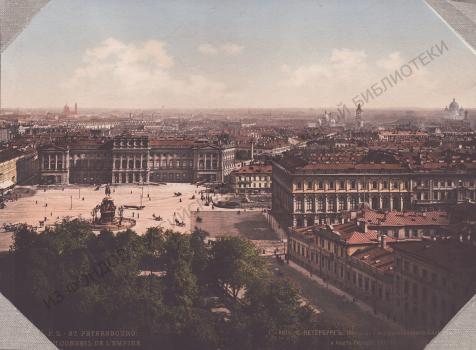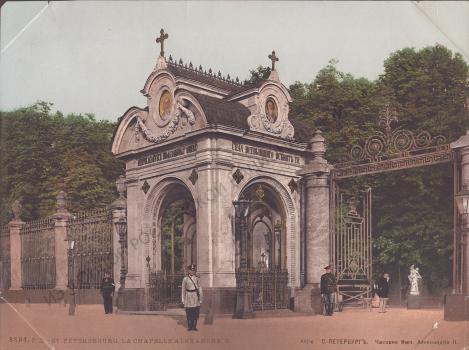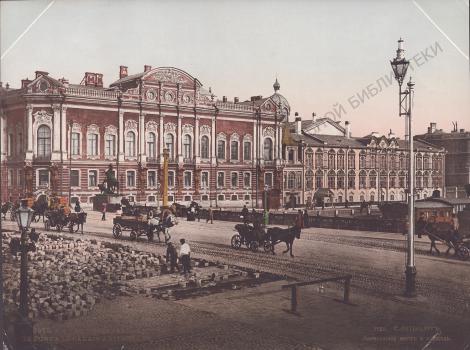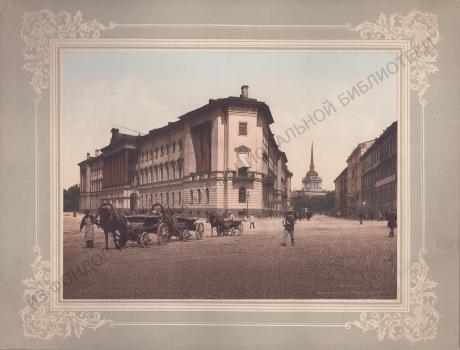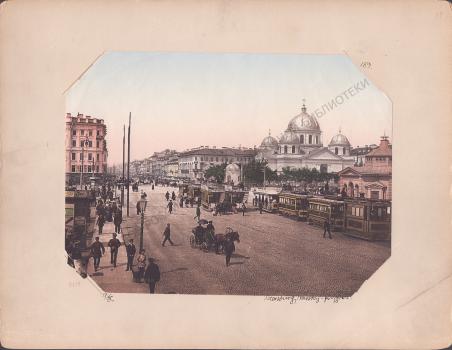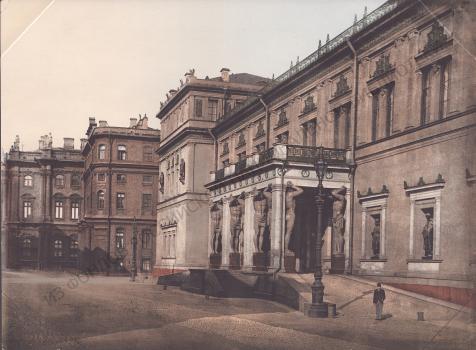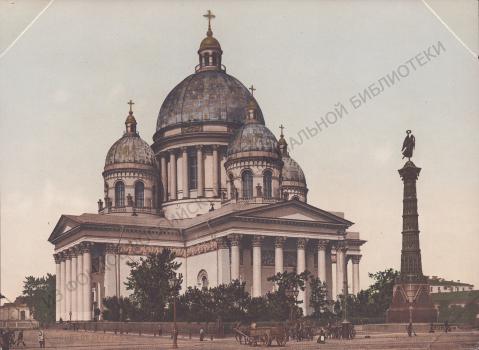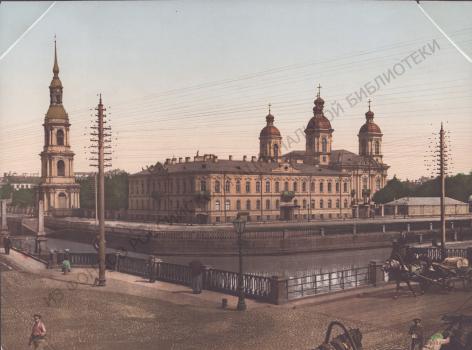Journey to St. Petersburg of the 19th and Early 20th Century through the Photochromes by the Photoglob Сompany
A. V. Yartseva
From the middle of the 19th century, the Imperial Public Library (now the National Library of Russia, NLR) collected photographic materials: both original prints and reproductions of photographs made by printing. Both of them were equally included in the catalog "Photographic and phototype collections of the Imperial Public Library" by Vladimir Vasilievich Stasov who headed the Department of Fine Arts and Technology. The catalog was published in 1885, four years prior to founding a Swiss company which would quickly become internationally famous for its ability to "make photographs multicolour before the invention of color photography"1. As one of its contemporaries emphasized, "there is no doubt that a good color image always produces a more pleasant and attractive impression than a black-and-white one" 2.
The color images were made with photochrom process developed in the 1880s by Swiss lithographer Hans Jakob Schmidt (1856-1924), an employee of the Orell Füssli joint-stock company from 1876. The company, known by this name from the end of the 18th century, launched as a print shop based in Zurich already at the early 16th century. In 1863, the company was inherited by the Wild brothers: Heinrich, Paul and Christian. In 1889, they founded its subsidiary, Photochrom & Co, to produce color images. In the same 1889, the first photochroms were a great success at the World Exhibition in Paris, bringing their manufacturers a gold medal.
Technologies of photography and multi-colour lithography were used to produce photochroms. One and the same black-and-white negative was exposed, according to the required colors, on several tint stones coated with a light-sensitive surface. Then they were sequentially printed on paper (a detailed description of the process can be found in the electronic publication of the Department of Visual Information of the Pushkin State Museum of Fine Arts “Photochrome: “the joy of watercolor colors” 3).
The publisher itself referred to photochromic prints as "color photographs". According to the catalogue of 18934, they went on sale in several forms: not glued to any support, on photographic cardboard with a gold edge, on painted cardboard with a gold border, and also on a passe-partout, ready for framing. Each image had a number, which, among other things, also indicated its format. Images of the 1st format (12x17 cm) were given numbers from one to three digits. Four-digit numbers, starting with 1, were used for the 2nd format (16x22 cm), Other formats also had four-digit numbers. For the 3rd (21x27 cm), 4th (28x37 cm) and 5th (35x46 cm) formats, they began with the number two, for the 6th (42x52 cm) - with the number three, for the 7th (50x65 cm) - with the number four. There were also panoramic views (about 60 cm long and about 16 cm high) and "extra-format" images (for example, 42x90 cm). Popular views could be issued in different formats - in two, three or even four sizes.
Switzerland was most fully represented in the catalog of the Photochrom publishing house for 1893. Among other countries are worth note Germany, Austria, England, France, Italy, and Egypt. Most of the photochroms are of the first two formats, which, along with tourist attractions, depict also "etudes" designed for lovers of nature and art. In general, the company counted on a wide interest in its products which could be acquired "in memory of a pleasant trip, for all kinds of gifts, for amateur and scientific collections, for educational and architectural tasks, for decorating hotel corridors, as samples for artists"5.
In 1894, a successful company was awarded a silver medal at the World Exhibition in Lyon6. In 1895, Photochrom & Co. was merged with Schroder & Co., and the company changed its name to Photoglob Co. During the second half of the 1890s, it increased production capacity. These changes led to a grow of photochroms manufacturing and the number of countries and regions depicted on them. At the International Exhibition in Paris in 1900, Photoglobe received another medal.
The company continued to operate throughout the 1910s, although the World War I took a toll on it. By 1917, the publisher's catalog contains more than 10,000 subjects that "visually show the most important monumental structures, cultural objects, folk types and folk costumes, landscape and natural beauties in bright, impressive guises"7. Photoglobe Co. offered its products as teaching aids, made a discount when buying 20 images at once, and introduced an annual subscription for 52 images. In both cases, the buyer also got a "beautiful folder."
By the time the Russian Empire get into the orbit of the company's interest, the principle of assigning publishing numbers had already changed compared to the first half of the 1890s. Thus, the St. Petersburg views of the 2nd format received four-digit numbers starting not with the number 1, but with the numbers 88, 89 and 90. There are at least forty such color views. If we take into account the nine pages devoted to the suburbs8, there are at least forty-five (№ 8801‑8824, 8894‑8897, 8916‑8929, 9019‑9021). The names of the photographers on the sheets are not indicated and are unknown at the moment.
The photochromes show the central streets and squares, famous architectural sights. Each of them can be shown from several points of view. For example, three images feature Palace Square with the Alexander Column and the main city highway — Nevsky Prospect. The statue of Emperor Peter the Great on Senate Square and the statue of Emperor Nicholas I on Mariyinskaya Square, the Kazan Cathedral and St. Isaac's Cathedral are depicted on two images each.
The photochromes feature other Petersburg churches: the Peter and Paul Cathedral, the Trinity Izmailovsky Cathedral, the St. Nicholas Epiphany Naval Cathedral. In addition, pictures by the Swiss company show a statue of Empress Catherine the Great on Alexandrinsky Square, the arch of the General Staff Building on Palace Square, the building of the Military Ministry on St. Isaac's Square, the Alexandrinsky Theater, the New Hermitage, Anichkov Bridge. You can see the Neva river and the architecture of its banks on photographs of the Nikolaevskaya and English Embankments, the Spit of Vasilyevsky Island with the Rostral Column. Two views were taken from above — obviously, from St. Isaac's Cathedral. These are Mariinsky Square and the Admiralty with the Alexander Garden in front of it.
Some of the "color photographs" allow you to see St. Petersburg's missing architectural structures: the floating Palace Bridge across the Neva, the Cathedral of the Sign on Znamenskaya Square, the chapel in the Summer Garden. They also show such disappeared urban realities as wood block pavements or the horse-drawn tram, the most common form of public transport at the turn of the 19th-20th century.
All photochroms with views of St. Petersburg, housed in our Prints & Photographs Department, once belonged to private owners. Five images mounted onto similar passe-partouts come from the collection of Vladimir Kurbatov (1878-1957), a chemist, art historian and an outstanding local historian in St. Petersburg. They are among the materials sold to the Library by the scientist’s relatives in 1957, after his death, and are related to his work on an illustrated edition dedicated to the 250th anniversary of Leningrad9.
All these five views are also found in another collector's album. Its origin is not established, it is only known that in January 1952 it was already in the Library. Its sheets contain cheap versions of the Photochrom and Photoglob editions that were sold without gluing to the support. Obviously, the owner himself subsequently fixed them on sheets of cardboard with slots. These cardboard mounts have handwritten notes in ink: the titles of the images in German (the publisher's signatures on the sheets are printed in French and Russian), the numbering established by owner, dates. Dates are represented by Arabic and Roman numerals separated by a slash (day and month only, no year).
The Petersburg selection consists of 50 sheets, on which the former owner put numbers from No. 180 to No. 229. 32 color images10 contain characteristic abbreviation “P. Z." - initial letters of the name of the publisher and place of publication: "Photochrom" or "Photoglob", Zürich. Another 18 images are black-and-white, they are labeled "Edition Photoglob" and have four-digit publishing numbers starting with 90.
These Petersburg views are part of a larger collection depicting various cities and places of the Russian Empire. It is difficult to say whether it reflects a real journey - or a "virtual"trip made by a collector of photochroms; whether the calendar numbers on the passe-partout are the dates of visiting these places - or the dates of the acquisition of photochroms11. Whatever this journey was, it began in Warsaw (17/VIII-18/VIII), followed by Odessa (19/VIII-21/VIII), Sevastopol (22/VIII) , Crimea (23/VIII-30/VIII), Caucasus (4/IX-9/IX), Moscow (11/IX), Sergiev Posad (12/IX), again Moscow (13/IX), Nizhny Novgorod (14 / IX), again Moscow (15/IX), St. Petersburg (17/IX and 19/IX), Peterhof (20/IX) and finally Riga (21/IX-23/IX).
In the 1890s, publishers emphasized the color excellence of photochroms which are "as good as watercolors and superior to ordinary oil paintings"12. A century later, this estimate may seem exaggerated. However, even now, looking at the 19th-early 20th century views of the capital city of St. Petersburg, we pay tribute to the coloristic originality of these "images with unsurpassed colors, real masterpieces born by the imagination of talented craftmen - manufacturers of color illustrations, artisan poets of that time that comes to life in front of astonished spectators"13.
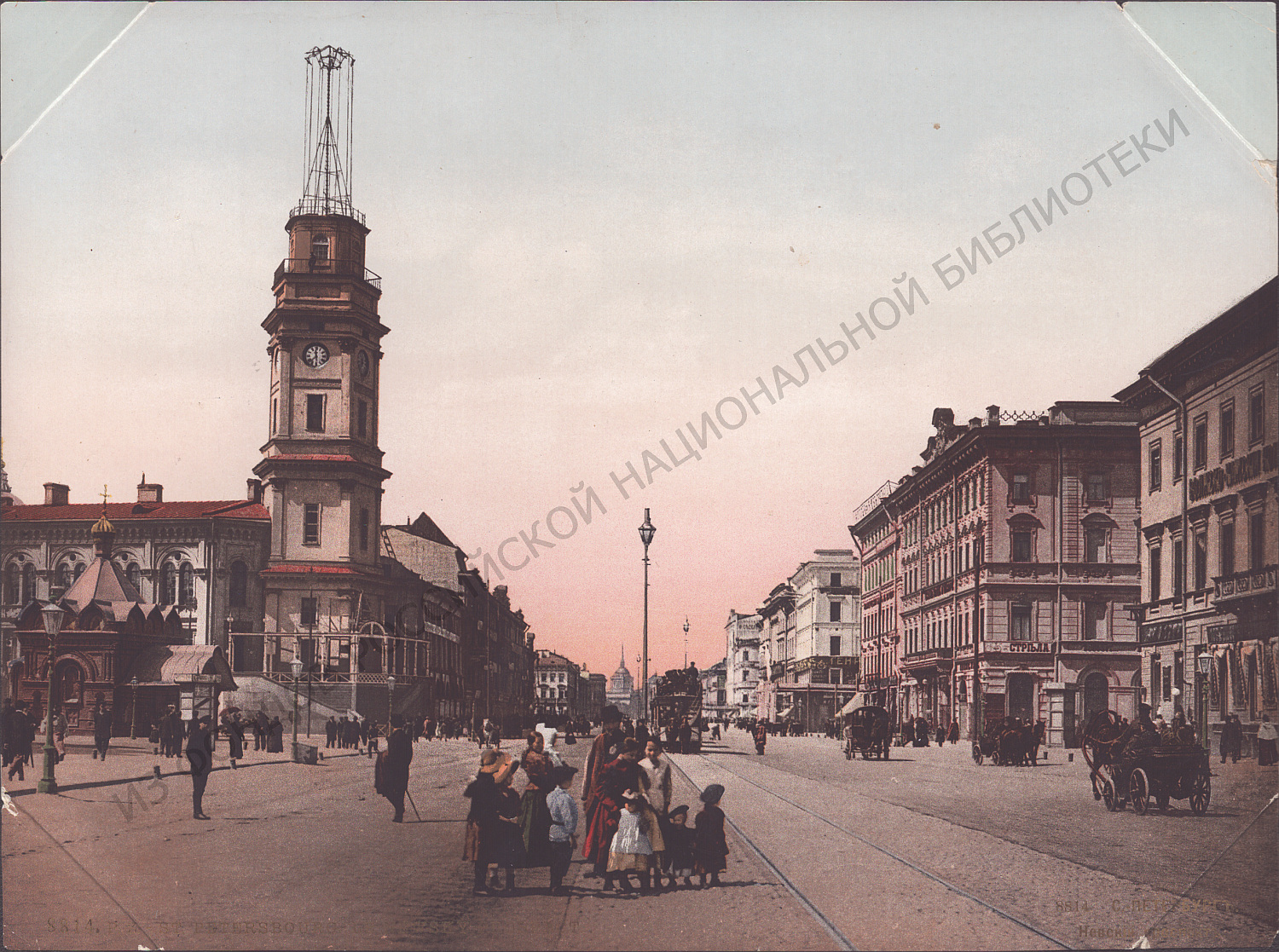
![St. Petersburg. Nevsky Prospect. View from Lejeune restaurant [i.e. Leiner] St. Petersburg. Nevsky Prospect. View from Lejeune restaurant [i.e. Leiner]](/ve/dep/artupload/ve/article/RA7257/MA66610/NA72096.jpg)
